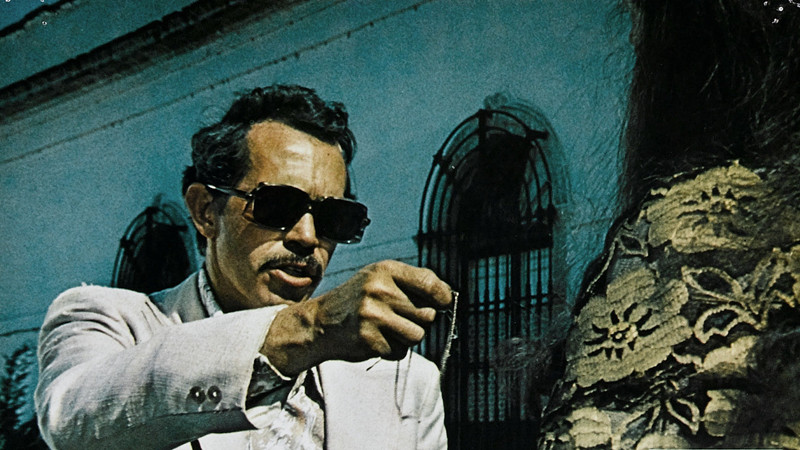
The 1970s were a transformative decade for film, marked by innovative filmmakers and ground-breaking experiments. The decade is now widely celebrated for its significant contributions to the film-making craft, characterised by pushing boundaries in both storytelling and film-making techniques. Perhaps reflecting the cultural zeitgeist, the films became more thought provoking and socially conscious, with crime standing out as a genre of particular interest.
This list details 10 crime films of the 70s that are often overlooked but exemplify exactly why this decade is still so highly revered today.
1. The Long Goodbye (Robert Altman, 1973)
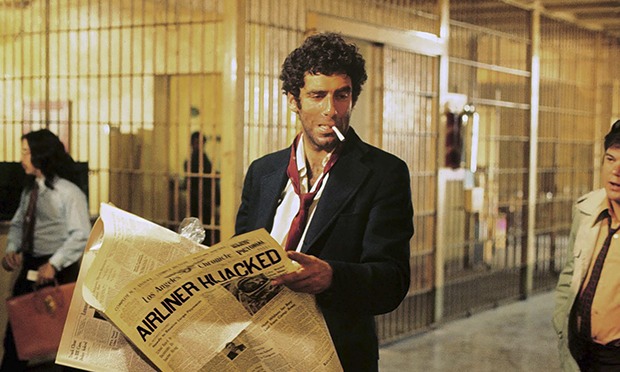
Elliot Gould plays Phillip Marlowe, a chain-smoking private detective who gives his friend Terry (Jim Bouton) a ride to Tijuana, Mexico. On his return, he becomes dangerously intwined in a murder mystery, accused of acting as accomplice (needs more). Adapted from Raymond Chandler’s 1953 novel of the same name, the screenplay was penned by Leigh Brackett who previous adapted The Big Sleep (1946), another Chandler classic, for the big screen. The film also features Sterling Hayden, Nina van Pallandt, Mark Rydell, Henry Gibson and a very early role from a young Arnold Schwarzenegger.
The Long Goodbye received mixed reviews upon its release, mostly due to the modernisation of Marlowe’s character who has been carefully crafted by Brackett, Altman and Gould. One critic, Charles Champlin from the Los Angeles Times wrote “The problem is that the Altman-Brackett Marlowe … is an untidy, unshaven, semiliterate, dim-wit slob…”. However, acclaimed critic Pauline Kael praised the film, and hailed Gould’s performance as “his best yet”. Retrospectively, the film has been elevated to the status of cult classic, Gould’s interpretation of Marlowe is praised for breaking the mould set by his predecessors. Altman’s perspective on 70s L.A culture has influenced many modern films such as Paul Thomas Anderson’s Inherent Vice.
The “Neo-Noir” genre was birthed on the sleazy contemporary streets of the 1970s, saying goodbye to the clean-cut, fast-talking smoothness of the 1940s. Films like Night Moves, Klute, The Late Show, Farewell My Lovely and the 1975 version of The Big Sleep, were all heavily influenced by, and adapted from, film noirs of the 40’s. Neo-noir saw the introduction of homosexuality, pornography, nudity and highly dangerous situations and rose like a phoenix from the ashes of the dead ‘noir’ genre.
The film, although an adaptation, truly becomes its own separate entity. Shot by Vilmos Zsigmond on the hazy streets of L.A, the film toys with the original source material adding smart, comedic elements and an audacious surprise ending for a “Marlowe” picture.
2. Rolling Thunder (1977)
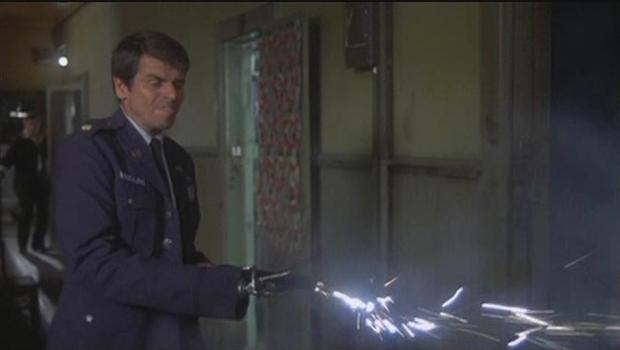
When Maj. Charles Rane (William Devane) returns home after years in a Vietnam POW camp, he’s celebrated as a hero and awarded silver coins for his devoted service. Soon after, a gang of ruthless thugs invade his home for the coins and after brutally destroying his hand, they leave him and his wife and son for dead. Unfortunately for them, Rane survives and swears revenges. The film features Linda Haynes, James Best and a stern Tommy Lee Jones. Written by Paul Schrader, many directors turned down the opportunity to take on the project (including John Milius, who had gone so far as to proclaim it as Schrader’s best work) finding the material to be too dark. The script eventually landed in the capable hands of John Flynn.
The film was met with mixed reviews, with many seeming to agree that the ‘extreme’ violence and the climactic ending negatively affected the overall experience. Now, however, the film is praised for exactly those reasons. Quentin Tarantino famously cites the film as one of his favourites, even naming his production company, Rolling Thunder Pictures, after the film.
Like many films of the era, Rolling Thunder raises complex questions about heroism, the fragility of the human psyche, and the violent power of unbridled rage. Although most of the film centres on Maj. Rane’s journey of revenge, one of the most poignant and thought-provoking sequences is Rane’s attempt to reconnect with his son after years of being subjected to relentless violence in the POW camp and dealing with the effects of potential PTSD, these delicate scenes provide a glimpse into what many soldiers must have been dealing with after returning home from the Vietnam war.
3. Charley Varrick (1973)
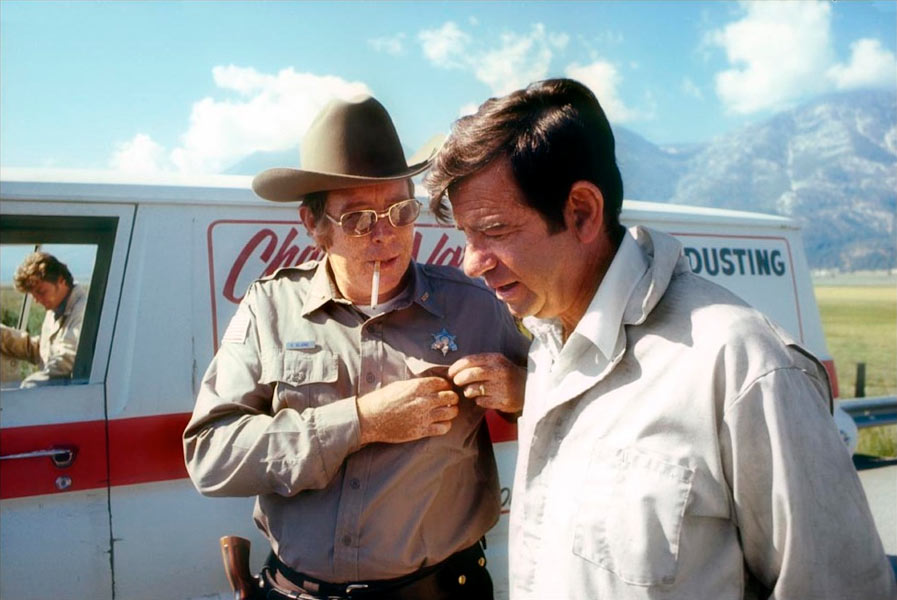
Don Siegel directs this early 70’s bank heist thriller which follows a small-time crook (Walter Matthau) after he robs a bank with the help of his wife and a young friend. The bloody robbery results in a very large pay-out but tensions rise when they realise the money they’ve stolen belongs to the mob who send out a merciless hitman (Joe Don Baker fresh from the set of Walking Tall) to retrieve the money. Adapted from the novel, ‘The Looters’ by John H. Reese, the script was penned by Dean Riesner and Howard Rodman. Riesner was a frequent collaborator with Clint Eastwood, having worked on the films such as Play Misty for Me and High Plains Drifter. The cast of Charley Varrick includes Felicia Farr and Andy Robinson, the latter of whom is best known for playing twisted serial killer “Serpico” in Siegel’s 1971 film Dirty Harry.
A game of cate and mouse ensues between the cunning Varrick and the menacing hitman, Molly. Playing against his usual comedic type, this movie marked the first of four consecutive films that Matthau starred in that were not comedies. Charley Varrick explores the themes of survival and greed, highlighting the deadly consequences of desperate criminality. No matter the genre, Don Siegal masterfully creates atmospheric worlds in which his characters struggle with paranoia, disorientation and suffocation. Charley Varrick is no exception, its gritty portrayal of the criminal underworld and its intelligent exploration of the themes previously mentioned makes for a captivating watch.
Full of twists leading up to it’s climactic ending, Charley Varrick hits every mark for being a smart, action packed, engaging and mysterious crime film, worthy of recognition as one of the greats.
4. Bring Me The Head Of Alfredo Garcia (1974)
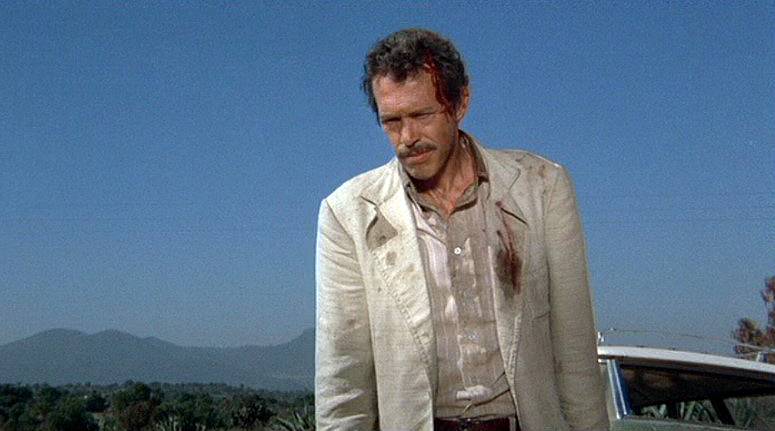
After learning that his teenage daughter is pregnant with Alfredo Garcia’s child, a powerful Mexican rancher, known only at ‘El Jefe’ (The Boss), offers a $1 million bounty to whomever brings him Garcia’s head. Two hitmen clad in smart business attire visit Bennie, an American working as a bar manager and pianist in a Mexico City, in the hopes of discovering Garcia’s location. Bennie plays dumb and lies to the main, claiming not to know Garcia. After learning of Garcia’s death, Bennie devises his own plan to bring the head of Garcia to El Jefe himself and take the bounty as his own.
The film was directed by “Bloody” Sam Peckinpah, a nickname awarded to him for his abundant and unabashed use of violence throughout many of his films. After the commercial failure of his previous film, Pat Garrett and Billy the Kid, Bring Me The Head Of Alfredo Garcia was shot on location in Mexico with a considerably low budget. Born from an idea of Peckinpah’s long-time screenwriting friend, Frank Kowalski. Peckinpah began writing the film whilst simultaneously shooting The Ballad of Cabal Hogue followed by Straw Dogs, in England. Amongst the cast are Robert Webber and Gig Young as the two well-dressed American hitmen and Kris Kristofferson also makes an appearance a ruthless biker, going against his usual good-guy roles in a shockingly disturbing scene.
A critical and commercial failure at the time, the film has now gained a cult resurgence in the time since its release as well as influencing the work of other filmmakers. Famed director of photography, Roger Deakins has stated that Alfredo Garcia provided visual inspiration whilst he worked on No Country for Old Men. The film has also been referenced in many films such as in Chevy Chase’s Fletch, Demolition Man, and Jim Reardon’s parody cartoon Bring Me the Head of Charlie Brown.
The film is a rough neo-western with romance and morals and a wicked sense of humour. The mission of trading the head for money tells us all we need to know about the characters morals and the reality of the environment they live in. Alfredo Garcia forces you to root for the protagonist despite his obvious faults but his persistent objective, no matter how dark, immoral or straight up disgusting, is what keeps the movie pushing forward. No Peckinpah film would be complete without a slow-motion shoot-out and Alfredo Garcia certainly doesn’t disappoint.
5. The American Friend (1977)
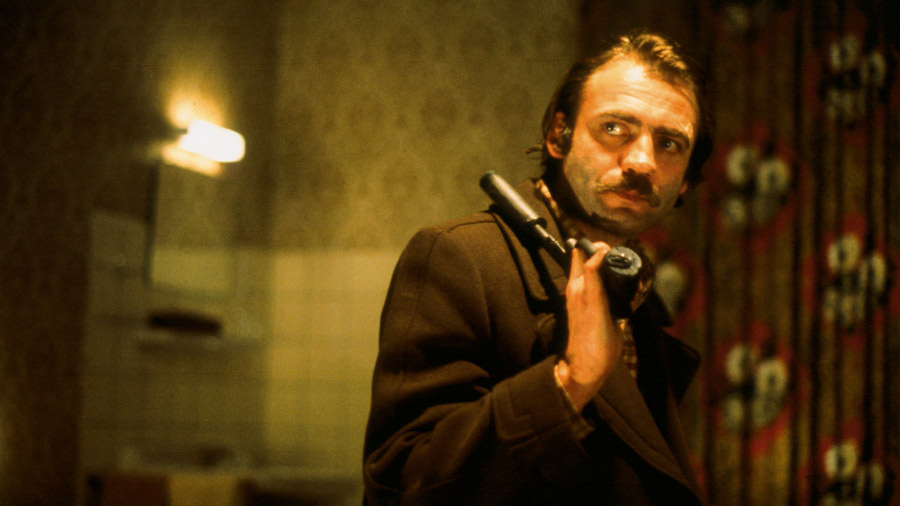
Dennis Hopper plays Tom Ripley, a wealthy American living in Hamburg who is involved in an elaborate forget art scheme. Ripley agrees to take part in a murder plot and when ordered to find a potential assassin he suggests Jonathan (Bruno Ganz), a picture framer dying from cancer. Jonathan is desperate to leave his wife and young son an inheritance and reluctantly accepts the dangerous job. However, Jonathan’s inexperience in killing for hire means that the job quickly goes wrong.
The character of Tom Ripley was Patricia Highsmith’s genius creation and is the protagonist of many of her novels. Wim Wenders, being a fan of Highsmith, wanted to adapt one of her novels. However, the rights to the novels Wenders originally wanted had already been sold, Highsmith offered him an unpublished manuscript of Ripley’s Game which thus became The American Friend. The cast includes performances from several film directors, such as, Gérard Blain, Nicholas Ray, and Samuel Fuller.
Wenders masterfully delves into the psychological complications of the characters while studying the consequences of moral compromise. The cinematography creates an almost spy-like intrigue as locations range from Hamburg, Paris and New York. Hopper carves out his unique version of Tom Ripley that differs greatly from other iterations of the character. Actors such as Alain Delon and Matt Damon, who played Ripley in Purple Noon and The Talented Mr Ripley respectively, portrayed Ripley closer to the original source material. Whereas Hopper, looking like Germany’s personal Marlboro Man complete with Cowboy hat, portrays an older, jaded Ripley. Under Wenders careful direction the audience is invited into the troubled and complex mind of the character as he confides his thoughts and secrets into a tape recorder. Alone, always.
The film is a beautifully shot neo-noir that consistently asks fascinating questions concerning morals, fear and death itself. The dying protagonist, turning to crime in a desperate attempt to provide for his family, could potentially be considered a predecessor to the infamous character of Walter White from Breaking Bad.